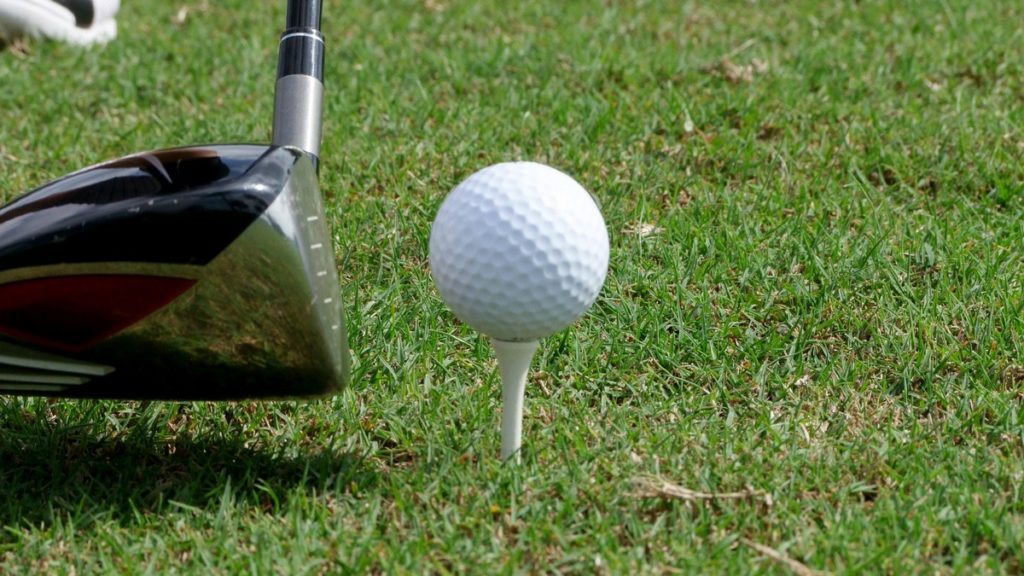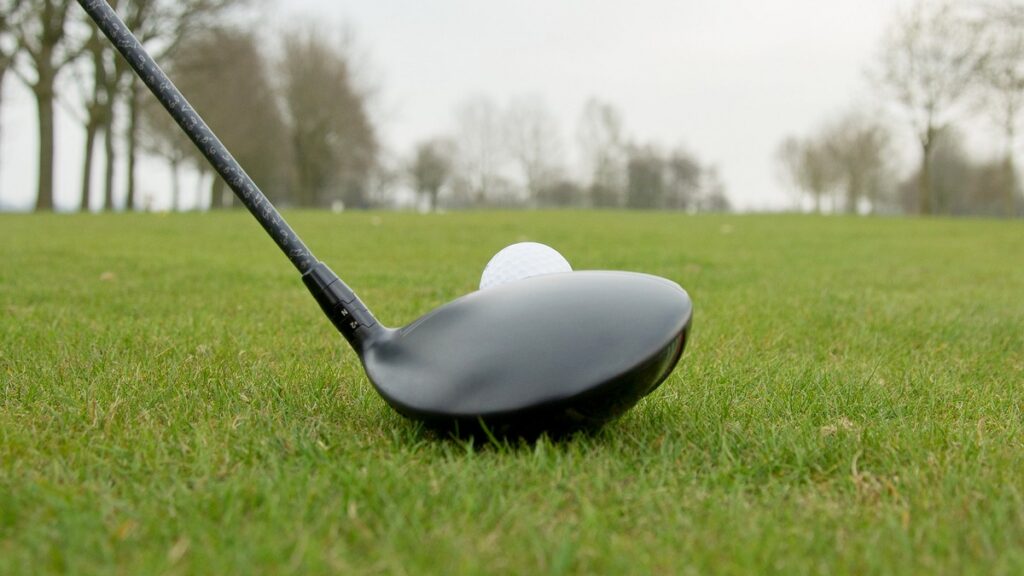The height at which you tee your golf ball with a driver might seem like a small detail, but it can have a significant impact on the shot’s trajectory, distance, and accuracy.
While it might seem subjective to a golfer’s prerogative, the ideal tee height depends on factors such as swing speed, clubhead speed and desired launch angle.
What effect can the tee height have on my shot?
As always, there are pros and cons. However, if you tee the ball too high or too low, it can have an impact on the shot you hit.
Teeing the ball too low
Lower launch angle: Teeing the ball too low can cause a lower launch angle, which creates a low, penetrating ball flight. While this can be advantageous in windy conditions, it can reduce the overall carry distance.
Hitting down on the ball: A lower tee height can result in a downward angle of attack. This generates backspin and can sometimes cause poor contact with the ball, usually reducing the carry and roll distance.
Striking the ground: Teeing the ball low can increase the risk of hitting the ground before making contact with the ball. This leads to “fat” shots or “dropkicks” that can significantly reduce distance and accuracy.

Teeing the ball too high
A higher launch angle: Similar to the lower launch angle with a low tee, teeing the ball too high can generate a higher launch angle. This can send the ball steeply into the air and result in a loss of distance.
Skying the ball: If the tee is too high — sitting above the crown of the club — there’s a high probability of “skying the ball”. This kind of strike connects with the upper part of the clubface rather than the centre and produces a weaker shot with less distance.
Less control: A higher tee can be harder to control with the driver. There is a greater chance of hitting the ball off-centre and generating side spin. This spin, twinned with a high launch angle, can send the ball way offline — picture a big slice.
The ideal tee height
For most everyday golfers, the ideal tee height should sit roughly half a golf ball above the top edge of the clubface at address. This position encourages a positive angle of attack, helping to optimise your distance and control by striking the ball on the upswing.
Factors influencing tee height
Swing speed: Golfers with a faster swing speed can afford to tee the ball slightly higher. Teeing the ball higher helps foster an upward angle of attack, which can increase the launch angle, reduce (back) spin and improve distance. If you are unsure of your swing speed, you can use this handy calculator to work out a rough estimate.
Clubhead speed: Similar to above, a higher clubhead speed can allow for a slightly higher tee to utilise the launch angle for added carry distance and roll.
Desired launch angle: This is relatively self-explanatory. A lower tee for a lower launch angle, and a higher tee for a higher launch angle. This can vary from golfer to golfer based on the factors included above, club face, and swing mechanics.
Course conditions: The wind can play a big factor in how high you tee the ball. If you’re playing into the wind, you’ll want to tee it low for a penetrating ball flight. Whereas if the wind is behind you, you might want to tee it high and let the ball fly with the wind for added distance.
So, how high should I tee my golf ball with a driver?
As mentioned above, the ideal tee height for a driver is a balance between finding the optimal launch angle and maintaining control. By understanding the factors that can influence your decision, you can experiment with the different heights until you find what works for your swing and playing style.

